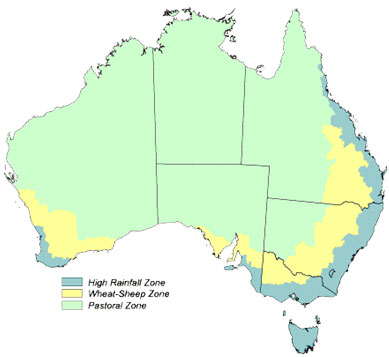Land Tenure in Australia
 Australian farms can generally be characterized by less than 10 percent of farms producing approximately 80 percent of farm output (Malcolm, 2011).
Australian farms can generally be characterized by less than 10 percent of farms producing approximately 80 percent of farm output (Malcolm, 2011).
The number of Australian farms has decreased from 195,700 in 1968-69 to 135,447 in 2011-12 (ABARES, 2013), which is a decrease of 31 percent in 44 years. If 1997-98 can be considered as a base year, and farmers’ terms of trade defined as the index of prices received as a percentage of the index of prices paid, then the farmers’ terms of trade fell from 175 in 1971-72 to 93 in 2011-12 (ABARES, 2013). Many farmers might therefore depend on new investors, more so than external investors need farmland. Therein lays a dilemma for an aging population of farmers seeking retirement with uncertain remuneration and farm succession difficulties (Dodson, 2004).
A majority (97 percent) of Australian farms remain family-owned, either through sole proprietorships, partnerships, or private companies, with the remainder either being vertically integrated with supply chain operations or else owned by non-farm equity investors (Malcolm, 2011). Foreigners own 11 percent of Australian farmland, mostly from the UK and North America, with Chinese companies owning less than 1 percent (KPMG, 2013).
Farm ownership transition and farm management/operating transition is on the verge of a monumental shift. The decrease in farm numbers and increase in farm size still does not equate to a profitable farming operation, our ageing demographics and tight cost-price squeeze has led to innovative ownership and business structures to be adopted.
Alternative land tenure occupancy practises are being implemented to create win-win situation for both landholder and land manager/operator. These include lease, sharefarming, profit sharing lease, joint ventures, farm syndicates, joint ventures and equity partnerships. All have opportunity of long term relationships which meet the needs of both parties, whilst maintain a sustainable landscape.
